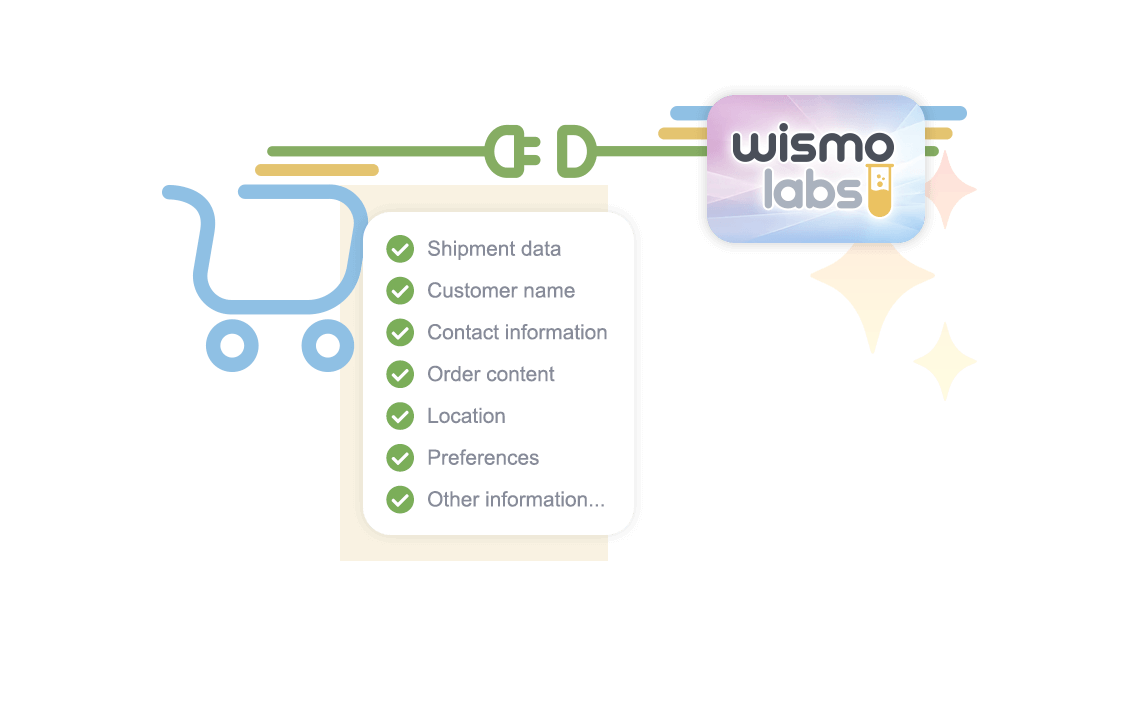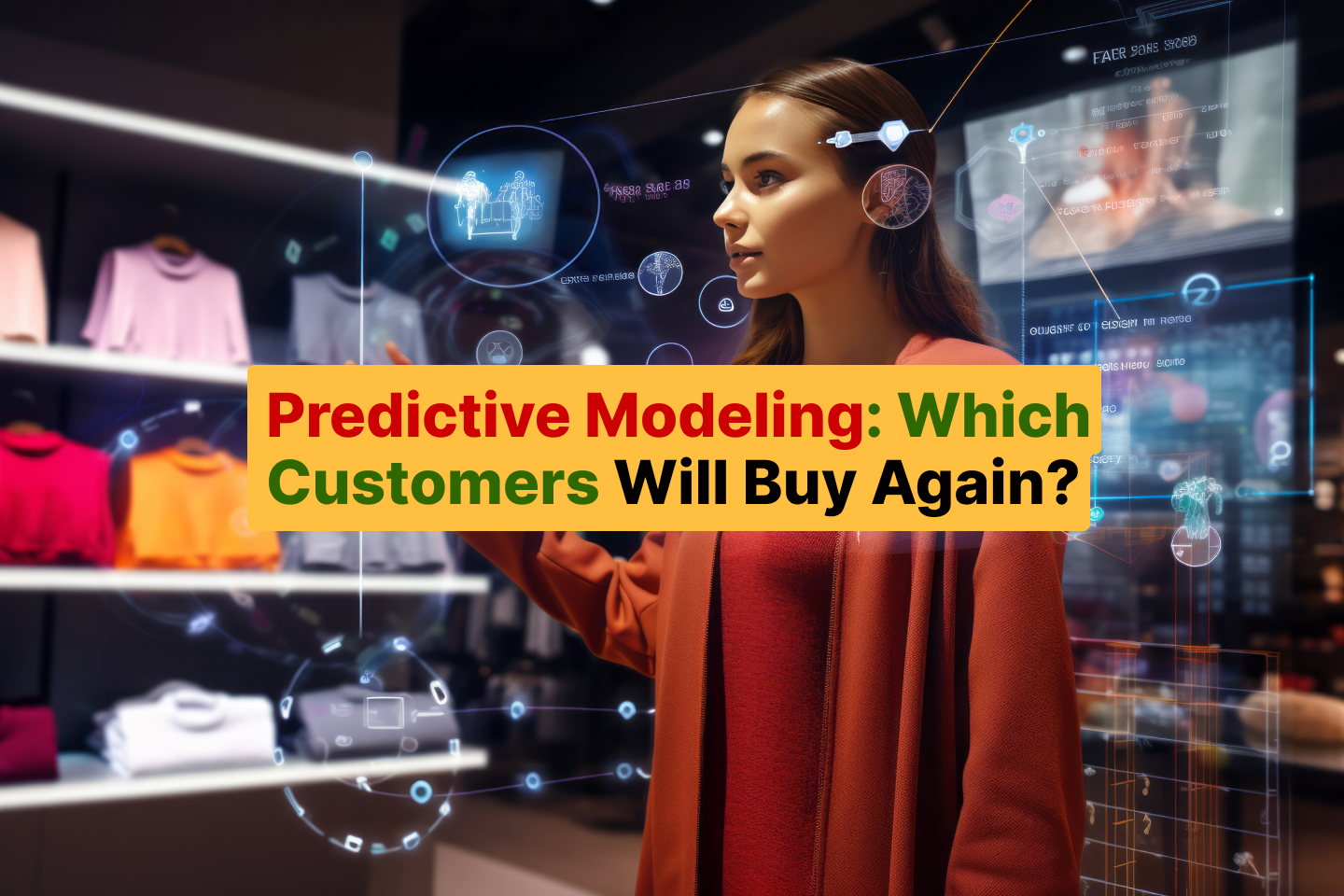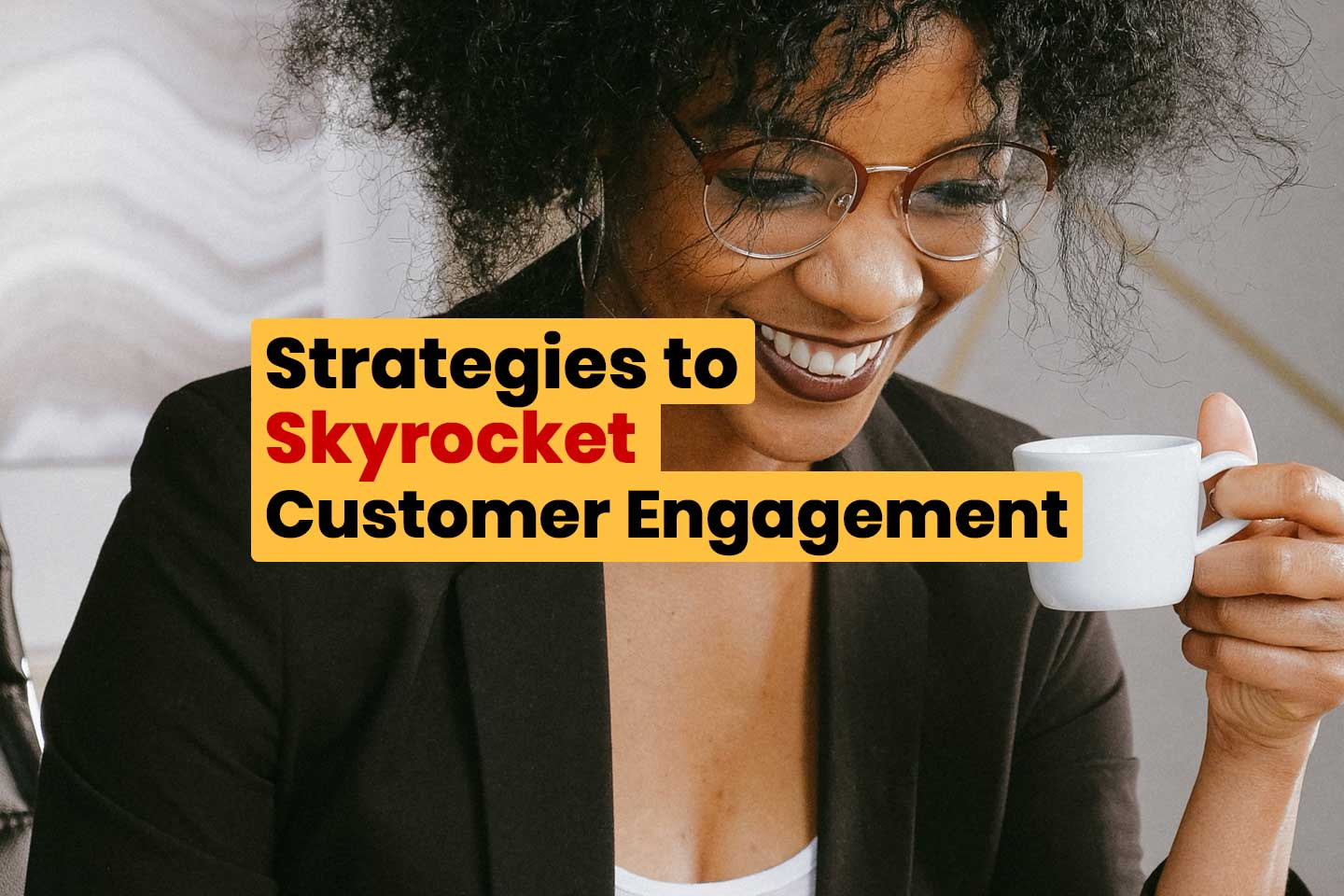Unlock the Power of Post-Purchase Intelligence to Drive Customer Lifetime Value
In today’s competitive e-commerce landscape, the ability to predict which customers will make repeat purchases has become the holy grail of customer retention. The post-purchase period represents a critical window where brands can leverage intelligent data analytics to transform one-time buyers into loyal, high-value customers. This transformation isn’t just about increasing sales—it’s about fundamentally changing how brands understand and interact with their customer base during the most receptive moments of the buying journey.
Traditional e-commerce strategies often focus heavily on acquisition, pouring resources into attracting new customers while neglecting the goldmine of opportunity that exists in the post-purchase experience. Research consistently shows that retaining existing customers costs five times less than acquiring new ones, yet the majority of brands still treat the post-purchase period as a passive waiting game rather than an active revenue generation opportunity.
The paradigm shift toward predictive modeling represents a fundamental change in e-commerce strategy. Instead of waiting to see which customers return organically, forward-thinking brands are using sophisticated analytics to identify high-potential customers early and actively nurture them toward repeat purchases. This proactive approach has proven to increase customer lifetime value by an average of 35-45% while simultaneously reducing operational costs through automated, intelligent engagement.
With WISMOlabs’ Customer Engagement Analytics and Personalization Engine, retailers can harness the power of predictive modeling to identify patterns, behaviors, and signals that indicate future purchase intent. The platform’s unique advantage lies in its ability to capture and analyze customer behavior during the critical post-purchase window when customers are most engaged with the brand, ultimately driving a 15-30x ROI on targeted campaigns and creating sustainable competitive advantages in an increasingly crowded marketplace.
🎯 The Science Behind Customer Repeat Purchase Prediction
Predictive modeling in e-commerce goes beyond simple purchase history analysis—it represents a sophisticated convergence of behavioral psychology, data science, and customer experience optimization. The fundamental principle underlying effective predictive modeling is that customer behavior during the post-purchase period provides the most accurate indicators of future purchasing intent. Unlike pre-purchase behaviors, which can be influenced by external factors like advertising or promotions, post-purchase behaviors reflect genuine satisfaction, engagement, and brand affinity.
The science behind customer prediction modeling involves examining multiple layers of customer interaction data, from macro-level patterns like purchase frequency and order values to micro-interactions such as email open rates, tracking page visits, and response times to customer service inquiries. WISMOlabs’ approach to predictive analytics focuses specifically on the post-purchase experience because this period offers the highest signal-to-noise ratio for predicting future behavior.
Modern predictive models analyze multiple data streams simultaneously, creating comprehensive customer profiles that enable precise targeting. These models leverage machine learning algorithms to continuously refine their accuracy and adapt to changing consumer behaviors. The sophistication of these systems lies not just in their ability to process vast amounts of data, but in their capacity to identify subtle behavioral nuances that human analysts might miss.
What sets advanced predictive modeling apart from traditional analytics is its focus on leading indicators rather than lagging indicators. While traditional metrics like purchase history tell you what has already happened, predictive models identify behavioral patterns that indicate what is likely to happen next. This forward-looking approach enables brands to intervene at critical moments in the customer journey, turning potential churn into loyalty and one-time purchases into long-term relationships.
The effectiveness of predictive modeling is amplified when applied during the post-purchase window because customers are in a unique psychological state during this period. They’ve already made a financial commitment to the brand and are actively seeking validation that they made the right choice. This creates an opportunity for brands to reinforce positive associations and guide customers toward future purchases through carefully timed, personalized communications.
- Engagement Velocity: This measures how quickly customers interact with post-purchase communications, including email opens, click-through rates, and time spent on branded tracking pages. High engagement velocity indicates active interest and correlates strongly with repeat purchase likelihood. Customers who engage within the first 24 hours of receiving notifications show a 73% higher probability of making additional purchases within 90 days.
- Tracking Frequency: The number of times customers check their order status provides insights into their investment level in the purchase outcome. Frequent tracking indicates emotional investment and anticipation, which typically translates to satisfaction when the delivery experience meets expectations. Customers who track their orders 5+ times show 2.3x higher repeat purchase rates compared to those who track once or never.
- Content Interaction Depth: Beyond simple click-through rates, this metric examines how customers engage with personalized recommendations, user-generated content, and educational materials included in post-purchase communications. Deep content interaction—measured by time spent, content sharing, and follow-up actions—indicates genuine interest in the brand beyond the initial transaction.
- Delivery Experience Sentiment: Customer satisfaction during the shipping and delivery process serves as a powerful predictor of future behavior. This includes response to delivery delays, satisfaction with packaging, and overall delivery experience ratings. Positive delivery experiences increase repeat purchase likelihood by up to 85%, while negative experiences can reduce it by over 60%.
- Cross-sell Receptivity: How customers respond to complementary product suggestions during the post-purchase period reveals their openness to expanding their relationship with the brand. High receptivity scores, even without immediate purchase, indicate customers who view the brand as a comprehensive solution provider rather than a single-transaction vendor.
- Communication Preference Patterns: The channels customers prefer for post-purchase communications (email, SMS, app notifications) and their response patterns across these channels provide insights into their communication style and engagement preferences. Customers who actively engage across multiple channels typically have 40% higher lifetime values.
- Problem Resolution Engagement: How customers interact with support resources during shipping delays or issues reveals their commitment to the brand relationship. Customers who actively seek resolution rather than simply abandoning the transaction show significantly higher retention rates and often become brand advocates.
- Social Proof Interaction: Engagement with reviews, testimonials, and user-generated content shared in post-purchase communications indicates customers’ interest in community and social validation. High interaction with social proof elements correlates with increased brand loyalty and advocacy behaviors.
📊 Key Behavioral Indicators for Repeat Purchase Prediction
🔮 Advanced Segmentation for Predictive Accuracy
Effective predictive modeling requires sophisticated customer segmentation that transcends traditional demographic boundaries and delves deep into behavioral psychology and purchase intent signals. The most successful e-commerce brands understand that customers with identical demographic profiles can have vastly different purchasing behaviors, especially during the critical post-purchase period. WISMOlabs’ revolutionary approach to segmentation focuses on real-time behavioral analysis during the window when customers are most receptive to brand messaging and most likely to reveal their true preferences and future intentions.
Traditional segmentation models rely heavily on historical purchase data, demographic information, and broad behavioral categories that often fail to capture the nuanced differences between customers who appear similar on the surface but have fundamentally different relationships with brands. Advanced behavioral segmentation, particularly when applied during the post-purchase experience, reveals patterns that are invisible to conventional analytics but highly predictive of future behavior.
The platform’s advanced segmentation engine creates distinct customer profiles based on real-time interactions, emotional engagement indicators, and micro-behavioral signals that traditional analytics systems often overlook. This granular approach enables brands to deliver highly personalized experiences that resonate on an individual level, significantly improving repeat purchase rates and customer lifetime value.
What makes this segmentation approach particularly powerful is its dynamic nature. Unlike static segments that categorize customers based on past behavior, WISMOlabs’ system continuously updates customer profiles as new behavioral data becomes available. This means that a customer’s segment assignment can evolve based on their most recent interactions, ensuring that personalization strategies remain relevant and effective over time.
The segmentation process incorporates multiple behavioral dimensions simultaneously, creating multi-dimensional customer profiles that capture the complexity of modern consumer behavior. These profiles consider not just what customers do, but when they do it, how they do it, and the context surrounding their actions. This comprehensive approach enables prediction accuracies that far exceed traditional segmentation methods.
🚀 Implementing Predictive Models in Your Post-Purchase Strategy

Strategic Implementation Framework
Successful implementation of predictive modeling requires a systematic, strategic approach that seamlessly integrates with your existing e-commerce infrastructure while minimizing disruption to ongoing operations. WISMOlabs has refined this implementation process through hundreds of successful deployments, creating a proven methodology that delivers rapid results with minimal risk. The platform provides comprehensive connectivity with over 750 global carriers and native integrations with major e-commerce platforms including Shopify, BigCommerce, Magento, and enterprise solutions like Salesforce.
The implementation strategy focuses on creating immediate value while building long-term predictive capabilities. Rather than requiring months of setup and data collection before seeing results, WISMOlabs’ approach begins delivering measurable improvements in customer engagement and operational efficiency from day one. Most clients experience significant reductions in WISMO calls within the first week of deployment.
The implementation process is designed for rapid deployment, with most clients going live within two weeks and seeing immediate results in reduced customer service inquiries and improved engagement metrics. This accelerated timeline is possible because WISMOlabs handles all technical integration complexities, allowing your team to focus on strategic outcomes rather than technical details.
What sets the WISMOlabs implementation apart is its emphasis on white-glove service throughout the entire process. Each client receives dedicated support from implementation specialists who understand both the technical requirements and the strategic business objectives. This personalized approach ensures that the predictive modeling system is optimally configured for your specific customer base, product mix, and business goals.
📈 Phase 1: Foundation & Data Collection
The initial phase focuses on establishing robust data collection infrastructure and creating baseline measurements for future comparison. This critical foundation ensures accurate predictive modeling from the outset.
- • Deep Integration Setup: Complete technical integration with existing e-commerce platforms, CRM systems, and marketing automation tools
- • Comprehensive Behavior Tracking: Implementation of advanced tracking mechanisms for all customer touchpoints during post-purchase journeys
- • Historical Data Analysis: Complete analysis of existing customer data to identify patterns and establish baseline metrics
- • Customer Journey Mapping: Detailed mapping of current customer experience flows and identification of optimization opportunities
- • Initial Segmentation Framework: Creation of preliminary customer segments based on existing behavioral data and business objectives
🤖 Phase 2: Model Training & Optimization
The second phase leverages collected data to train sophisticated machine learning models that can accurately predict customer behavior and optimize engagement strategies in real-time.
- • Advanced Algorithm Deployment: Implementation of proprietary machine learning algorithms optimized for e-commerce behavioral prediction
- • Multi-dimensional Data Analysis: Comprehensive analysis combining transactional, behavioral, and contextual data for maximum predictive accuracy
- • Pattern Recognition Calibration: Fine-tuning of pattern recognition systems to identify subtle behavioral indicators unique to your customer base
- • Predictive Accuracy Testing: Rigorous testing and validation of model accuracy using statistical methods and real-world scenarios
- • Dynamic Segmentation Activation: Launch of intelligent segmentation system that automatically categorizes customers based on real-time behavior
🎯 Phase 3: Campaign Execution & Scaling
The final phase focuses on executing sophisticated, personalized campaigns at scale while continuously optimizing performance based on real-time customer responses and market feedback.
- • Personalized Messaging Deployment: Launch of highly targeted, individualized communication campaigns across all customer segments
- • Real-time Campaign Optimization: Continuous adjustment of messaging, timing, and content based on immediate customer response data
- • Advanced A/B Testing Protocols: Systematic testing of different approaches to maximize engagement and conversion rates
- • Comprehensive Performance Monitoring: Detailed tracking and analysis of all key metrics with proactive optimization recommendations
- • Strategic Scaling & Expansion: Gradual expansion of successful strategies across broader customer segments and new use cases
💡 Real-World Success Stories: Predictive Modeling in Action
The effectiveness of predictive modeling becomes evident through tangible business outcomes. WISMOlabs has helped numerous e-commerce brands transform their customer retention strategies using data-driven insights from post-purchase interactions.
These success stories demonstrate how strategic implementation of predictive analytics can dramatically improve customer lifetime value while reducing operational costs through automated, intelligent customer engagement.
🏆 Fashion Retailer Case Study
Challenge: High customer acquisition costs with low repeat purchase rates during seasonal sales events.
Solution: Implemented proactive post-purchase engagement with predictive segmentation.
Results:
- 85% reduction in WISMO calls
- 42% increase in repeat purchases
- 28x ROI on targeted campaigns
🌱 Home & Garden Retailer Success
Challenge: Seasonal purchasing patterns with long gaps between orders.
Solution: SKU-based predictive modeling for complementary product recommendations.
Results:
- 35% increase in Customer LTV
- 28x ROI on cross-sell campaigns
- 60% improvement in engagement rates
📱 Technology Integration: Building Your Predictive Infrastructure
Modern predictive modeling requires seamless integration across multiple technology platforms to create a unified view of customer behavior. WISMOlabs provides native integrations with leading e-commerce platforms, CRM systems, and marketing automation tools.
The platform’s robust API infrastructure enables real-time data synchronization and automated workflow triggers, ensuring that predictive insights translate immediately into personalized customer experiences.

Shopify Plus
Native integration for enterprise stores
Klaviyo
Advanced email marketing automation
BigCommerce
Enterprise e-commerce platform
Salesforce
CRM and marketing automation
📈 Measuring Success: KPIs for Predictive Modeling ROI
Measuring the effectiveness of predictive modeling requires tracking specific key performance indicators that directly correlate with business outcomes. WISMOlabs provides comprehensive analytics dashboards that make it easy to monitor these critical metrics in real-time.
The platform’s built-in reporting tools enable brands to track both immediate tactical wins and long-term strategic improvements in customer relationship quality and revenue generation.
💰 Revenue Metrics
-
Customer Lifetime Value (CLV)
Average increase: 35-45% -
Repeat Purchase Rate
Typical improvement: 40-60% -
Cross-sell Conversion
ROI range: 15-30x
📞 Operational Metrics
-
WISMO Call Reduction
Average decrease: 70-90% -
Support Ticket Volume
Reduction: 60-80% -
Resolution Time
Improvement: 50-70%
❤️ Engagement Metrics
-
Customer Satisfaction
CSAT improvement: 25-40% -
Email Engagement
Click rates: 300-500% increase -
Brand Loyalty Score
Net Promoter Score +15-25 points
🔄 Continuous Optimization: The Evolution of Predictive Models
The most effective predictive models are those that continuously learn and adapt to changing customer behaviors and market conditions. WISMOlabs employs machine learning algorithms that automatically refine their accuracy over time, ensuring that your customer predictions remain relevant and actionable.
This dynamic approach to model optimization means that your brand loyalty strategies and customer engagement tactics become more sophisticated and effective with each interaction, creating a compound effect on customer lifetime value.
- Real-time Learning: Models update predictions based on immediate customer responses
- Seasonal Adaptation: Algorithms adjust for seasonal shopping patterns and trends
- Cohort Analysis: Tracking different customer segments to identify emerging patterns
- Predictive Accuracy Monitoring: Continuous validation and refinement of model performance
- Competitive Intelligence: Adapting strategies based on market dynamics and competitor actions
🚀 Ready to Transform Your Customer Predictions?
Join leading e-commerce brands who have revolutionized their customer retention strategies with WISMOlabs’ predictive modeling platform. Get live in under two weeks with our white-glove setup process.




